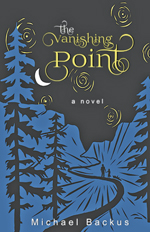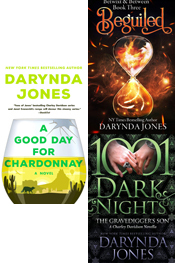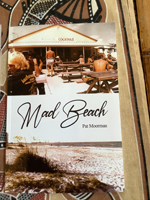Creative nonfiction author Neill McKee is a retired teacher, international filmmaker, and multi-media producer. In 2021 he published Kid on the Go!, his third memoir, that follows his early life in Ontario, Canada. You’ll find Neill on Facebook, Twitter, and LinkedIn, as well as on NeillMckeeAuthor.com. To learn about his first two memoirs, read his 2019 and 2021 SWW interviews.
 Kid on the Go! is a prequel to your first memoir, Finding Myself in Borneo. What do you want readers to know about this newest release?
Kid on the Go! is a prequel to your first memoir, Finding Myself in Borneo. What do you want readers to know about this newest release?
It is what I would call a stand-alone prequel. There’s no need to read this one before my Borneo memoir. Kid on the Go! is all about the experiences that led me to an international career. It’s a journey through my childhood, adolescence, and teenage years from the mid-1940s to the mid-1960s, in the small (then industrially-polluted) town of Elmira, Ontario, Canada—one of the centers of production for Agent Orange during the Vietnam War. I describe ordinary experiences in a humorous way: learning to play and work, fish and hunt, avoid dangers, cope with death in the family, deal with bullies, and build or restore “escape” vehicles. I describe my exploding hormones, attraction to girls, rebellion against authority, and survival of 1960s’ rock ‘n’ roll culture and how I emerged on the other side as a youth leader. Many readers tell me they relate to parts of my experiences. My writing brings up many memories of their own, and that’s what I was aiming for.
Tell us how the book came together.
I started to write draft stories for this book when I retired from my main career in 2013. I wrote my three memoirs—Kid on the Go!, Finding Myself in Borneo, and Guns and Gods in My Genes—simultaneously, but I published this one last. After the latter book was released in December 2020, I got down to finishing the prequel. My editor, Pamela Yenser, had already completed one revision and I had feedback from about ten reviewers, so it was a matter of refining the text and sending it back to Pamela for a second look before my final edits and review by my proofreader. I probably went through 50 drafts before publishing.
My design company came up with about four cover concepts but I favored the one I designed myself—an illustration I did of me flying over my polluted hometown on a motorized scooter I made in the 1950s. My designers were skeptical, but I did a little pretest by sending about seven possible covers to 50 people for their opinions. My design concept won, hands-down, although I made a change to the subtitle so that potential readers would not think it’s a children’s book.
What unique challenges did this work pose for you?
Actually, it was the easiest of my three memoirs to write. Except for the postscript, which contains a brief analysis of the chemical pollution in my town, this book did not require a lot of research.
 Kid on the Go! is based on my own memories and some of my brother’s recollections. I’m lucky to have such a clear memory of my childhood and youth. I just had to put it all into words that would have a somewhat universal appeal, at least for memoir readers who like to explore past eras. I decided to make the book different by adding over 50 illustrations. My artist wife, and an illustrator I tried to hire, convinced me to do the illustrations myself, since they would be more authentic. That took many hours of work.
Kid on the Go! is based on my own memories and some of my brother’s recollections. I’m lucky to have such a clear memory of my childhood and youth. I just had to put it all into words that would have a somewhat universal appeal, at least for memoir readers who like to explore past eras. I decided to make the book different by adding over 50 illustrations. My artist wife, and an illustrator I tried to hire, convinced me to do the illustrations myself, since they would be more authentic. That took many hours of work.
Do you have a quote from Kid on the Go! that you’d like to share?
Here’s an excerpt from Chapter 3:
During the summers, we explored and fished in the creek downstream from the chemical factory, where DDT, 2,4-D, and 2,4,5-T were in full production. There, we came upon acidic festering pools and creepy things, such as frogs with two heads and fish with only one eye. We didn’t try very hard to catch these fish, but if we happened to hook one, we’d throw it back in. They looked too spooky, almost ghost-like, and Mom never liked fish, anyway.
At suppertime, if we tried to tell Mom and Dad about these weird creatures of the Canagagigue Creek, Dad would chuckle and Mom would say something like, “You’re lucky to have meat and potatoes, unlike the children in Africa, so eat up all that’s on your plate.”
Any great revelations about your younger self or your upbringing while writing the book?
I think I was surprised to find how much mentors changed my life. As I grew older, I became an increasingly rebellious youth, especially in the rock ‘n’ roll 1960s when being a “hard rock” was cool—a term used for guys who slicked back their hair like Elvis Presley, wore leather jackets, drifted through school, fixed up and raced old cars and motorcycles, and chased girls.
 But in Grade 12, then the second-last year of high school in Ontario, on a cold and rainy night, I saw lights on in our family’s church, which I had stopped attending. I parked my car and entered an ongoing Young People’s meeting where what I considered to be straitlaced girls gasped at the sight of me. There I met my first mentor, a student minister by the name of Bob who was studying theology and philosophy at university. We quickly became friends and I started to read books he suggested, such as Paul Tillich’s The Eternal Now, Dietrich Bonhoeffer’s Letters from Prison, and Martin Buber’s I and Thou. Bob preferred questions rather than answers to stimulate deep discussions. I’d never experienced this approach before. When I returned the next week, I was elected Vice President and then President in Grade 13, although by then I was more interested in Zen Buddhism than Christianity. Through discussion groups, debates, music and dances, I doubled attendance.
But in Grade 12, then the second-last year of high school in Ontario, on a cold and rainy night, I saw lights on in our family’s church, which I had stopped attending. I parked my car and entered an ongoing Young People’s meeting where what I considered to be straitlaced girls gasped at the sight of me. There I met my first mentor, a student minister by the name of Bob who was studying theology and philosophy at university. We quickly became friends and I started to read books he suggested, such as Paul Tillich’s The Eternal Now, Dietrich Bonhoeffer’s Letters from Prison, and Martin Buber’s I and Thou. Bob preferred questions rather than answers to stimulate deep discussions. I’d never experienced this approach before. When I returned the next week, I was elected Vice President and then President in Grade 13, although by then I was more interested in Zen Buddhism than Christianity. Through discussion groups, debates, music and dances, I doubled attendance.
Much changed for me in school as well, where I was encouraged by my English teacher, Mr. Exley, a man only five years my senior. He was an unusual character who taught literature with dramatic gestures. He coached me on my terrible poetry and marked my essays thoroughly with a fine red pen. He also privately lent me his copy of Bob Dylan’s album The Times They Are A-Changin’ and recommended J.D. Salinger’s obscenity-filled The Catcher in the Rye (not on the curriculum, for sure!). And when I entered university, I forged friendships with people from different cultures—graduate students from Southern Rhodesia (now called Zimbabwe) and Egypt. The influence of these last two mentors steered me in an international direction.
What was your favorite part of putting this project together?
I believe it was rediscovering how much each childhood and youth experience determined my ultimate direction in life. It’s not that I, nor anyone else, could have predicted it from any trend in my behavior. It’s the collective experience that counted. For instance, I write about how, very early in my life, I dreamed of living in some far away exotic and verdant land and believed the shapes on a distant hill beyond the chemical factory were African animals. I ended up living in, and working in, Borneo and Africa.
 I was never much of a reader as a child. As soon as my parents bought a television set in 1953, I became glued to it. I visualized everything and I’m sure it had a lot of influence on me becoming a filmmaker. Also, as a young kid, I had little fear of venturing into dangerous places like polluted creeks where I saw those creepy, transformed fish and frogs. That probably led me to take chances in life and work in places where many people would not want to venture.
I was never much of a reader as a child. As soon as my parents bought a television set in 1953, I became glued to it. I visualized everything and I’m sure it had a lot of influence on me becoming a filmmaker. Also, as a young kid, I had little fear of venturing into dangerous places like polluted creeks where I saw those creepy, transformed fish and frogs. That probably led me to take chances in life and work in places where many people would not want to venture.
What is the greatest challenge of writing for the memoir market?
So many bestselling childhood memoirs are by people who struggled against physical or mental abuse, poverty, racial or cultural discrimination, or dogmatic parents and guardians, but somehow overcame such oppression to get a good education and succeed in life. It is a challenge to write and sell books in such a market since I experienced none of those conditions. So what could I write about that would tell an entertaining, captivating story? I had to have something to struggle against to add conflict and drama to the narrative. In my case, it was the industrial and environmental pollution I experienced in my hometown. The odors from chemical and fertilizer factories, the slaughter house, and unpleasant manure smells radiating from Old Order Mennonite farmers’ fields provide the setting for the overall theme of escape.
So far, your focus has been on nonfiction. Have you ever wanted to write fiction?
I haven’t ventured into fiction writing because I seldom read fiction. I watch movies for relaxation in the evening, while sipping some wine. I have always wanted to seek new facts and discover things about the real world in my filmmaking and writing. That’s challenging enough for one life, I feel.
 After writing three books about your life, what is the most important lesson you’ve learned about publishing?
After writing three books about your life, what is the most important lesson you’ve learned about publishing?
The most important lesson is that writing and publishing is only half of the task. I chose to self-publish through Ingram Spark because, at my age, I could not wait for the time it would take to find a suitable publisher. I had a couple of offers from publishers for my Borneo book, but they were not willing to put any serious amount of resources into marketing—I’d have to do that myself while they took most of the royalties. So, that’s what occupies the other half of my time. I’m told there are about 1,000 new titles published everyday in North America’s English market in all genres. A book marketing specialist said I was doing everything right: a good website with a blog and event page, interviews, a blog and review tour for each book, special publication reviews, sending out many updates to a large email list, and some social media posts. The latter is the hardest thing for me to find the motivation to do because I am not sure it sells books. I just keep trying.
What writing projects are you working on now?
I have completed over half of the first draft of my next manuscript on my career as an international filmmaker and multimedia producer working for two Canadian development agencies, UNICEF, Johns Hopkins University, and an agency called FHI360 in Washington, D.C., where I was director of a communication project with 150 staff and a large budget. During my career, I lived for four years in Malaysia, four years in Bangladesh, seven years in Kenya and Uganda (East Africa), and my last overseas posting was in Moscow during 2004-2007. Besides that, I traveled to about 80 countries on short-term assignments. All this has given me significant experience in learning about issues within so many fields of endeavor to improve human life in the developing world. My challenge is to write about my career creatively and coherently in a way that will entertain and educate—that is, make readers smile, wonder, and think about the present state of our planet. I am also including thoughts on what was and wasn’t achieved in the projects I documented or created, my advancement in skills, personal development, marriage and family life, and memories of many of the people I met in my travels and those who influenced me and propelled my way forward. I hope to complete this book by the end of 2022. I’ve set up a website on my main projects, including most of the videos, comic books, and other media products I have retrieved so far: https://www.neillmckeevideos.com/.
 KL Wagoner (writing as Cate Macabe) is the author of This New Mountain: a memoir of AJ Jackson, private investigator, repossessor, and grandmother. Kathy has a new speculative fiction blog at klwagoner.com and writes about memoir at ThisNewMountain.com.
KL Wagoner (writing as Cate Macabe) is the author of This New Mountain: a memoir of AJ Jackson, private investigator, repossessor, and grandmother. Kathy has a new speculative fiction blog at klwagoner.com and writes about memoir at ThisNewMountain.com.





